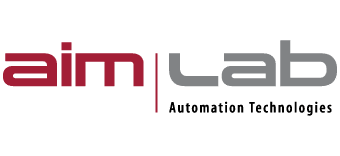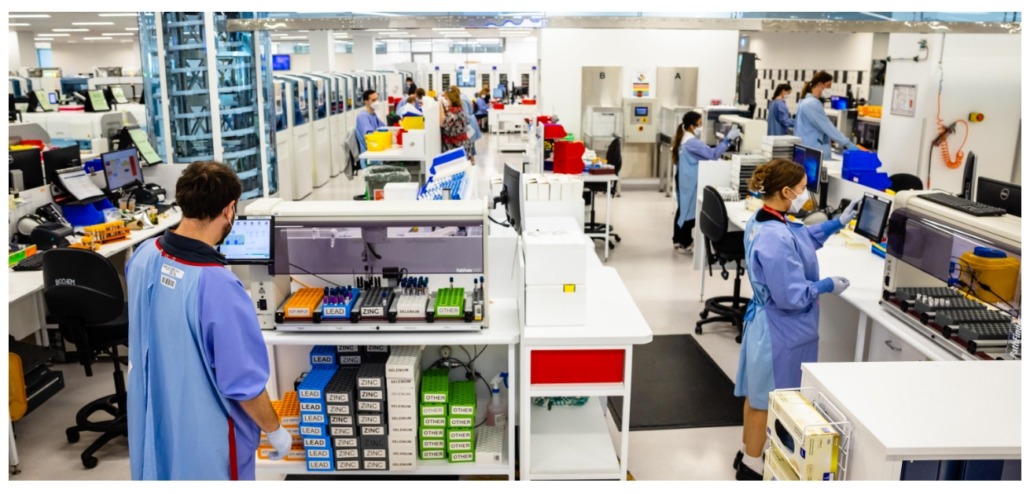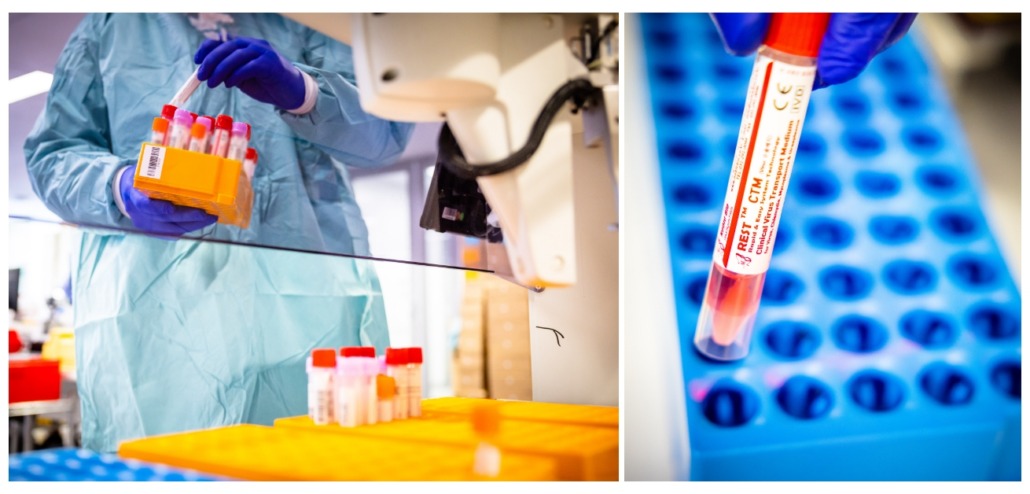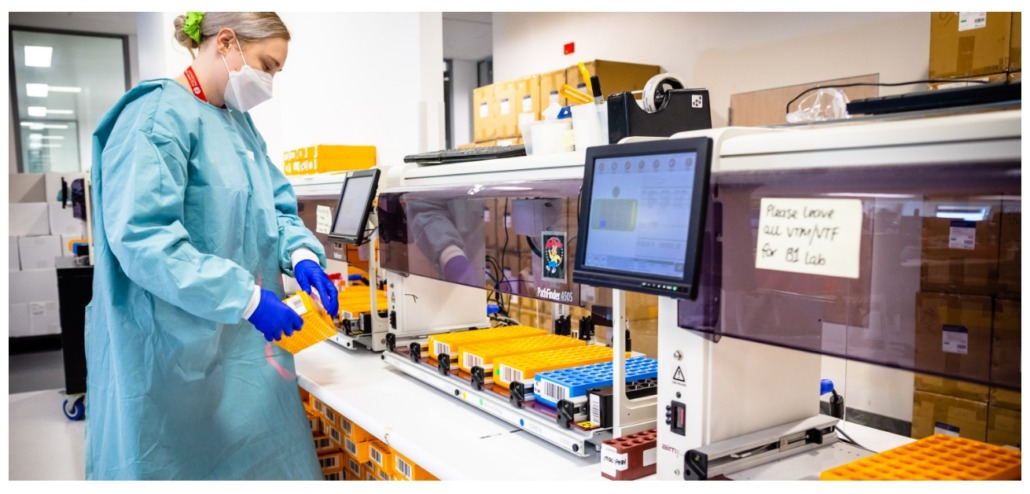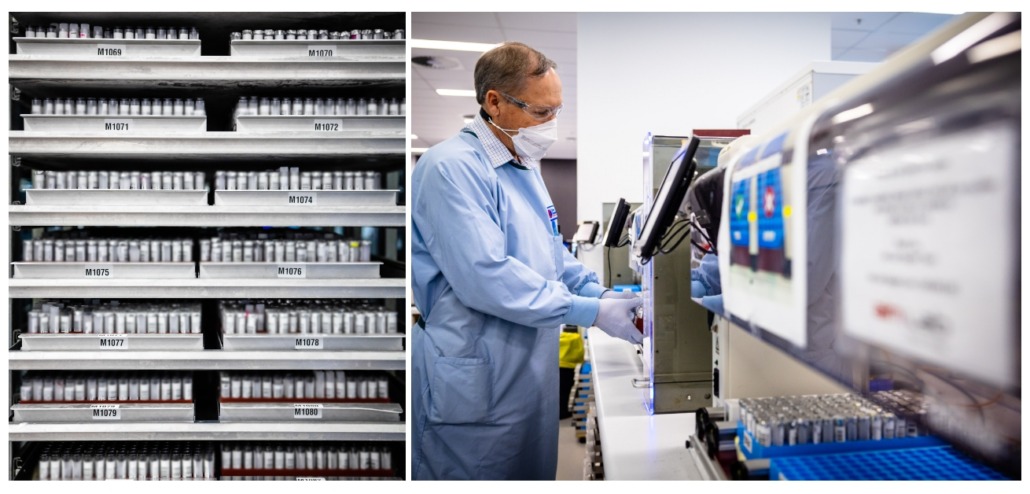“There’s no problem too big” Why Sullivan Nicolaides Pathology is in it for the long run with Aim Lab
As Australia’s largest private referral laboratory servicing doctors, private hospitals and aged care facilities across Queensland, Northern New South Wales and the Northern Territory, the efficient processing and storage of thousands of samples a day must surely be a challenge for Sullivan Nicolaides Pathology.
So, what happens when events such as natural disasters and a global pandemic increase testing volumes whilst putting a strain on staffing levels?
Lindsay Reibelt is Assistant Manager, Immunology at Sullivan Nicolaides Pathology. Having been with the company for 38 years he has dealt with many challenges and changes in the lab.
Reibelt said: “There have been ups and downs with COVID affecting not only staffing levels, but also timely transport of our supplies and reagents. We still have to come to terms with that from week to week. Having said that, our goal is to continue operating the lab at full potential and capacity, despite some of these challenges.”
Shane Byrne is Scientific Department Head, Microbiology and Molecular Pathology Departments at Sullivan Nicolaides Pathology. He said that Aim Lab’s PathFinder was a key tool for some unanticipated problems:
“As COVID rolled in we immediately recognised the need to store samples even ahead of testing, which is a bit unique, you don’t usually store samples before you’ve tested them.
We leveraged not only the sorting capabilities of PathFinder, but also the storage component, which was a novel thing. When you receive 20,000 samples in a day and someone rings up about Fred Bloggs’ and he needs his test urgently, the question is, where is it in 20,000 swabs?
Being able to store samples in a defined rack ahead of testing was useful because we could just grab things out.”
From the moment they are delivered to the lab floor, specimens need to be recorded and transported to the correct department and instrument for testing.
Daniel Head, Assistant Manager, Preanalytical SRA Department at Sullivan Nicolaides Pathology, said that manual processing can lead to errors which have a knock-on effect for the lab, and the patient.
“For example, with sorting samples, when you’re printing out labels they could get misplaced onto tubes, and that would be quite serious. We would classify that as a patient mis-ID, so we couldn’t guarantee that patient is actually that patient. It usually ends up being a recollect and that means having to go back and let the physician know, having to get that patient back in. And then not only delaying their result, but also running the risk that they don’t fulfil that pathology request and actually go and get their test again.”
Head has found the PathFinder solutions highly valuable in reducing errors in specimen reception:
“With our PathFinder 350D Pluses, it’s reading the barcodes and sorting them from there. So, the sample’s never going to be put in the wrong place. And we’ve always got a track event to say where it’s actually been.”
Another challenge in Byrne’s department was the shape of the tube. Previous racks used in sorting and storage had been designed for blood tubes that have a curved bottom, rather than the flat-bottomed tubes being used for microbiology samples. This meant without some tweaking the thousands of COVID samples coming into the lab could not go smoothly through the automated workflow the lab team had created to manage the high volume.
Aim Lab was able to work with Sullivan Nicolaides Pathology to develop racks that could not only accommodate different shaped and sized tubes but were also colour coded for storage purposes.
Tim Foster is a Scientist and IT Applications Officer, Biochemistry at Sullivan Nicolaides Pathology. He has worked at the lab for more than 15 years and has seen a lot of change within that time, particularly in bringing more automation into the lab.
However, workflow still has to be carefully managed and requires systems, and people, to work together. Foster said:
“We’ve recently put in a massive track system, so all of our instruments are now connected, but we still didn’t have a very good front, or a backend solution for a lot of our samples. We still had some samples that needed to be sorted manually but with the volume we got to the point that we couldn’t throw any more people at it to make it work, so we needed instruments to do it.”
“When you’re looking at 30,000 tubes a day, the 2,000 or 3,000 that come off the track here or there, we still need to handle somewhere. Anytime that the track couldn’t connect or couldn’t get to a certain area of the lab, we’ve used an Aim Lab instrument.”
For a forward-thinking and fast-paced lab, partnering with a technology company that can provide innovative and versatile solutions has been essential. Integrating the various technologies is also key. Foster noted; “Aim Lab instruments didn’t have any issues integrating with the different analysers.”
The ability of Aim Lab’s solutions to also integrate with the Laboratory Information System (LIS) has enabled Sullivan Nicolaides Pathology to create a truly smart lab environment and to become a pillar in Sonic Healthcare’s pathology network, sharing their learning with sister laboratories around Australia.
The pinpoint tracking of Aim Lab instruments integrated with the LIS means that samples are always easy to locate, saving time for laboratory staff, improving turnaround times and reducing errors.
Sullivan Nicolaides Pathology has been an early adopter of the PathFinder Connect system to ensure that the lab is getting the best from their investment in automation technology, Foster said: “PathFinder Connect basically queries the LIS for every sample, and we can give it a priority system of ‘this test first, that test second, or this combo of tests – send it this way, that combo of tests – send it that way’. The ‘smarts’ is in our LIS, but the PathFinder Connect system that Aim Lab have programmed makes it work really well with our LIS. It’s very configurable, but then I think everything Aim Lab creates is that way.”
Byrne noted that this functionality has been particularly useful during the shift to COVID endemicity. In many cases, where a symptomatic patient tests negative to COVID, follow up respiratory testing will be requested.
Byrne said; “We were able to work with the Aim Lab team very dynamically to change the logic so the sorting algorithm would pick out samples to test for COVID, or for COVID with another test, or something different.”
Adopting this technology requires an investment of staff time and energy to get things right but with the clear benefits to be gained the team at Sullivan Nicolaides takes a long-term view, Head said: “These are long term solutions to problems that we’ve had for many years.”
With 19 systems in play in different departments, the main laboratory at Sullivan Nicolaides Pathology houses the biggest installation of Aim Lab solutions in Australia.
Byrne values Aim Lab’s commitment to service; “A lot of tech companies can be more set up for non-clinical settings. Our customers are patients who are sick and needing results. The service support component for non-clinical versus a clinical setting is a frame shift for some companies. For us, time is of the essence and Aim Lab are very responsive.
Sometimes it means responding at night-time and weekends. It could mean having to stay until it’s fixed if we know there are thousands of samples coming in later that night.”
Foster has been impressed with Aim Lab’s commitment to problem solving and providing tailored solutions: “When we have a workflow problem, we describe it, and they can usually give us a solution reasonably quickly. There’s no problem too big. Every time we’ve ever given them some kind of issue we’re facing, they’ve never said no. They’ve just said, ‘Leave it with us.’”
